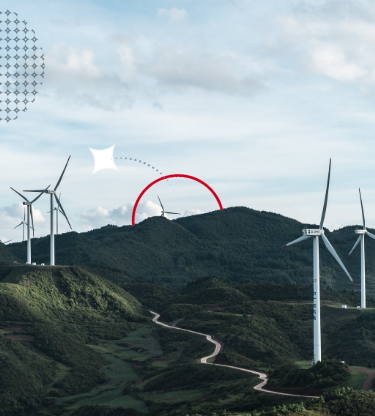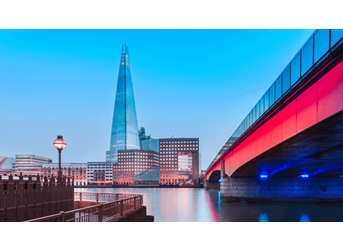How can SMEs navigate the path to net zero?

The transition to net zero looks different for every business and sector, but there are steps all SMEs can take to limit risk.
5 minute readIn the weeks leading up to the UN Climate Change Conference (COP26) in Glasgow earlier this month, every sector and industry speculated about how this year’s conference would set the world on a path to net zero.
Of the many urgent topics requiring discussion on the global stage, there was no question that climate finance – how to pay for the transition to net zero – would be a top priority. This costly transition, estimated to require $4 trillion a year, may be a complex financial equation but is one which the Wall Street Journal says isn’t impossible to solve.
Following the money
It is said that the way to distinguish between greenwashing and sincere commitments to a net zero future is by “following the money.” And, for the first time, climate commitments coming out of COP26 are now more than symbolic. In the UK, the Treasury announced plans to become the world’s first net-zero-aligned financial centre. The new plans require UK financial institutions and listed companies to publish the details of how they intend to adapt and decarbonise, as the UK strives for a net zero economy by 2050.
For businesses, this means that the government is now actively enabling the transition to net zero and that the economy is evolving to accommodate this dramatic shift. Having the government’s support will also go a long way in protecting businesses against the volatility that the net zero transition will inevitably bring.
It also means that the government is now holding businesses to account – and that tangible steps need to be taken now to achieve one of the greatest and most urgent transitions the world has ever undertaken, by 2050.
Transition = risk
It’s no surprise that with this transition there will be financial risks for everyone – from consumers to businesses to governments.
After all, most transitions in life bring risk, no matter how much planning or research is done. Take moving house as an example: we can choose our homes, but can’t choose our neighbours. And when changing jobs: we weigh professional stability with the prospect of more responsibility or greater fulfilment, but don’t know the outcome until the new role has already begun.
With the transition to net zero, there are risks that we can plan for, like funding, which the public and private sectors have agreed is the key to unlocking the net zero transition for everyone. And then there are risks that we can anticipate and which we are starting to encounter, but don’t yet know how to solve.
One example is market volatility caused by the introduction of renewable energies. There’s no guaranteeing sunny or windy conditions, so there are stretches of time when these sources are not contributing to the grid. There are other times when the sun is shining and wind is blowing for days on end, but there is limited capacity to store the energy produced. These unpredictable conditions can lead to volatility in the economy. 2021 serves as a perfect example; the driest and lowest-wind conditions for 70 years lead to a shortfall in renewable energy production. This contributed to the huge spike in energy prices and contributed to the loss of several energy suppliers and rising fuel poverty around the country.
How can SMEs limit risk?
For small businesses, which tend to have less capital, financial risks can be particularly daunting. As we have seen in the past 18 months, times of uncertainty – COVID-19, Brexit, and now decarbonisation – can create volatile exchange rate fluctuations, increasing currency risk and the need for SMEs to revisit their hedging strategy.
Fortunately, there are steps SMEs can take to limit risk and minimise the potential financial impact of transitioning to net zero:
- SMEs should learn about their currency risk: How will the revenue and profit margins of your business be impacted by the transition to net zero?
- SMEs should check their risk and assess how financial market fluctuations can affect their business
- Consider services such as forward contracts which typically allow you to lock in an exchange rate for up to two years, and FX orders
With risk comes the opportunity to grow the best version of your business, for your bottom line and for the planet.
By taking these steps and speaking with an expert who understands the landscape and your business needs, SMEs can better navigate through currency fluctuations, protect themselves from volatility, and maximise the opportunities that come with the transition to net zero.
moneycorp and sustainability
To make sure we’re playing our part, moneycorp has teamed up with environmental charity One Tree Planted, which plants trees across the world.
Our green initiative is to combat deforestation and help restore our earth. Forests provide homes to 80% of the world’s land animals, help clean the air we breathe and filter the water we drink. They also help to absorb carbon from the atmosphere and provide jobs to over 1.6 billion people. However, a forest area the size of a football field is destroyed every 1.2 seconds, which is why as a business globally we are doing what we can to help change that.
|
|


